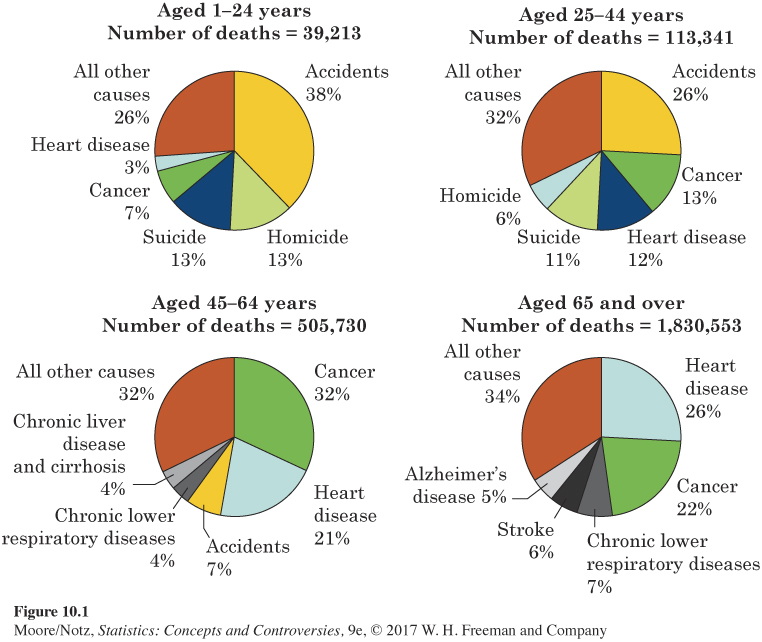Data tables
Take a look at the Statistical Abstract of the United States, an annual volume packed with almost every variety of numerical information. Has the number of private elementary and secondary schools grown over time? What about minority enrollments in these schools? How many college degrees were given in each of the past several years, and how were these degrees divided among fields of study and by the age, race, and sex of the students? You can find all this and more in the education section of the Statistical Abstract. The tables summarize data. We don’t want to see information on every college degree individually, only the counts in categories of interest to us.

EXAMPLE 1 What makes a clear table?
How well educated are adults? Table 10.1 presents the data for people aged 25 years and over. This table illustrates some good practices for data tables. It is clearly labeled so that we can see the subject of the data at once. The main heading describes the general subject of the data and gives the date because these data will change over time. Labels within the table identify the variables and state the units in which they are measured. Notice, for example, that the counts are in thousands. The source of the data appears at the foot of the table. This Census Bureau publication in fact presents data from our old friend, the Current Population Survey.
| Level of education | Number of persons (thousands) |
Percent |
|---|---|---|
| Less than high school | 24,458 | 11.7 |
| High school graduate | 62,240 | 29.7 |
| Some college, no degree | 34,919 | 16.7 |
| Associate’s degree | 20,790 | 9.9 |
| Bachelor’s degree | 42,256 | 20.2 |
| Advanced degree | 24,623 | 11.8 |
| Total | 209,287 | 100.0 |
| Source: Census Bureau, Educational Attainment in the United States: 2014. | ||
Table 10.1 starts with the counts of people aged 25 years and over who have attained each level of education. Rates (percentages or proportions) are often clearer than counts—it is more helpful to hear that 11.7% of this age group did not finish high school than to hear that there are 24,458,000 such people. The percentages also appear in Table 10.1. The last two columns of the table present the distribution of the variable “level of education’’ in two alternate forms. Each of these columns gives information about what values the variable takes and how often it takes each value.
Distribution of a variable
The distribution of a variable tells us what values it takes and how often it takes these values.
EXAMPLE 2 Roundoff errors
Did you check Table 10.1 for consistency? The total number of people should be
24,458 + 62,240 + 34,919 + 20,790 + 42,256 + 24,623 = 209,286 (thousands)
But the table gives the total as 209,287. What happened? Each entry is rounded to the nearest thousand. The rounded entries don’t quite add to the total, which is rounded separately. Such roundoff errors will be with us from now on as we do more arithmetic.
It is not uncommon to see roundoff errors in tables. For example, when table entries are percentages or proportions, the total may sum to a value slightly different from 100% or 1, often to 99.9 or 100.1%.